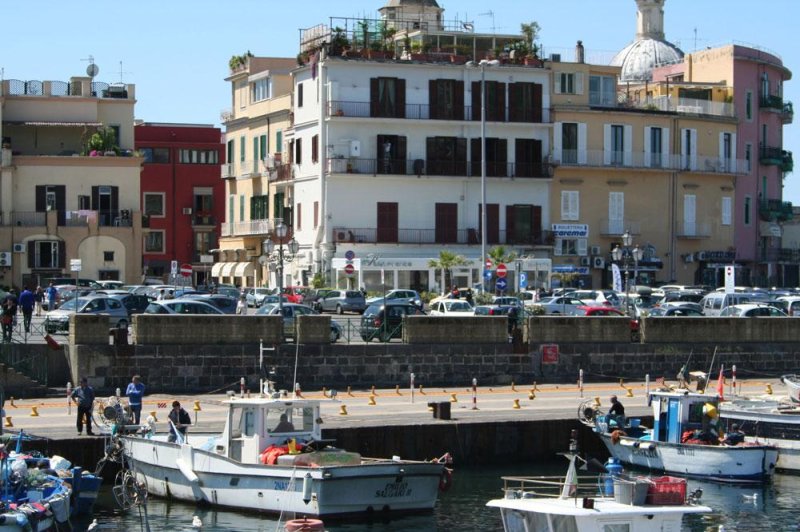As a result of seismic activity caused by the Campi Flegrei volcano in southern Italy in the 1950s, 1970s and 1980s, the port city Pozzuoli has experienced 10 feet of crustal uplift. Photo by UCL
May 16 (UPI) -- New analysis of fracturing in Campi Flegrei, an active volcano in southern Italy, suggests an eruption could happen sooner than previously predicted.
The volcano featured two years' of rumbling -- including small earthquakes and crustal uplift -- in the 1950s, 1970s and 1980s. A new predictive model suggests a considerable amount of energy was stored up in the volcano's crust during the previous periods of unrest.
Until now, scientists assumed stored energy dissipated after years of inactivity, but the latest modeling efforts suggest otherwise.
The findings -- detailed in the journal Nature Communications -- suggest Campi Flegrei is closer to erupting than previously thought.
"By studying how the ground is cracking and moving at Campi Flegrei, we think it may be approaching a critical stage where further unrest will increase the possibility of an eruption, and it's imperative that the authorities are prepared for this," Christopher Kilburn, volcanologist at University College London, said in a news release.
The predictive model used by scientists is informed by the history of Campi Flegrei's activity as well as the track record of volcanoes like it.
"We are getting closer to forecasting eruptions at volcanoes that have been quiet for generations by using detailed physical models to understand how the preceding unrest develops," Kilburn said.
Campi Flegrei last erupted in 1538. The eruption was preceded by a century of periodic unrest.
Fracturing and stretching of the volcanic crust increases the risk of a volcanic eruption because it becomes easier for moving magma to break through to the surface.
Campi Flegrei's caldera is not a conical mountain but a large depression. Some 360,000 people live atop the volcano, and Naples, with a population of 1 million, is just a few miles away. Previous volcanic activity has triggered the evacuation of thousands of residents.
"Most damage in previous crises was caused by the seismic shaking of buildings. Our findings show that we must be ready for a greater amount of local seismicity during another uplift and that we must adapt our preparations for another emergency, whether or not it leads to an eruption," warned researcher Giuseppe De Natale.















